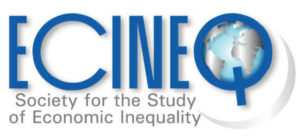Inequality indices as tests for fairness
Working Paper 2017-432
Abstract
Standard income inequality indices can be interpreted as a measure of welfare loss entailed in departures from equality of outcomes, for egalitarian social welfare functions defined on the distribution of outcomes. But such a welfare interpretation has been criticized for a long time on the grounds that these indices are snap shot outcomes-based measures which do not take into account the process generating the observed distribution. Rather than focusing on outcomes, it is argued, we should be interested in whether the underlying process is “fair”. Following this line of argument, this paper develops statistical tests for fairness within well-defined income distribution generating processes and a well specified notion of fairness. We find that the likelihood ratio (LR) test for fairness versus unfairness within two such processes are proportional to Theil’s first and second inequality indices respectively. The LR values may either be used as a test statistic or to approximate a Bayes factor that measures the posterior probabilities of the fair version of the processes over that of the unfair. The answer to the process versus outcomes critique is thus not to stop calculating inequality measures, but to interpret their values differently-to compare them to critical values for a test of the null hypothesis of fairness, or to use them directly as a measure of the chance that the process was fair relative to the chance it was unfair. We also apply this perspective to measurement of “inequality of opportunity”.
Authors: Ravi Kanbur, Andy Snell.
